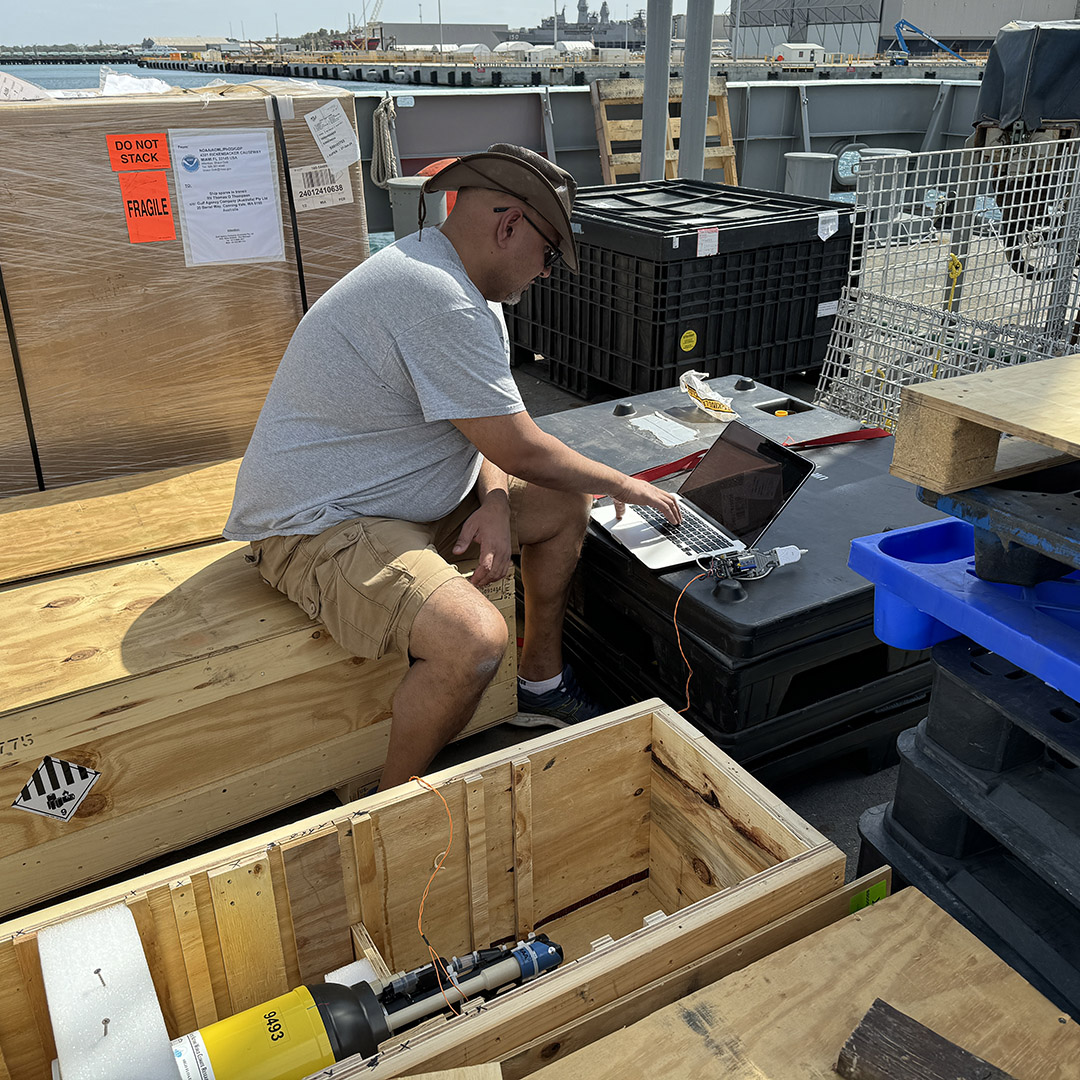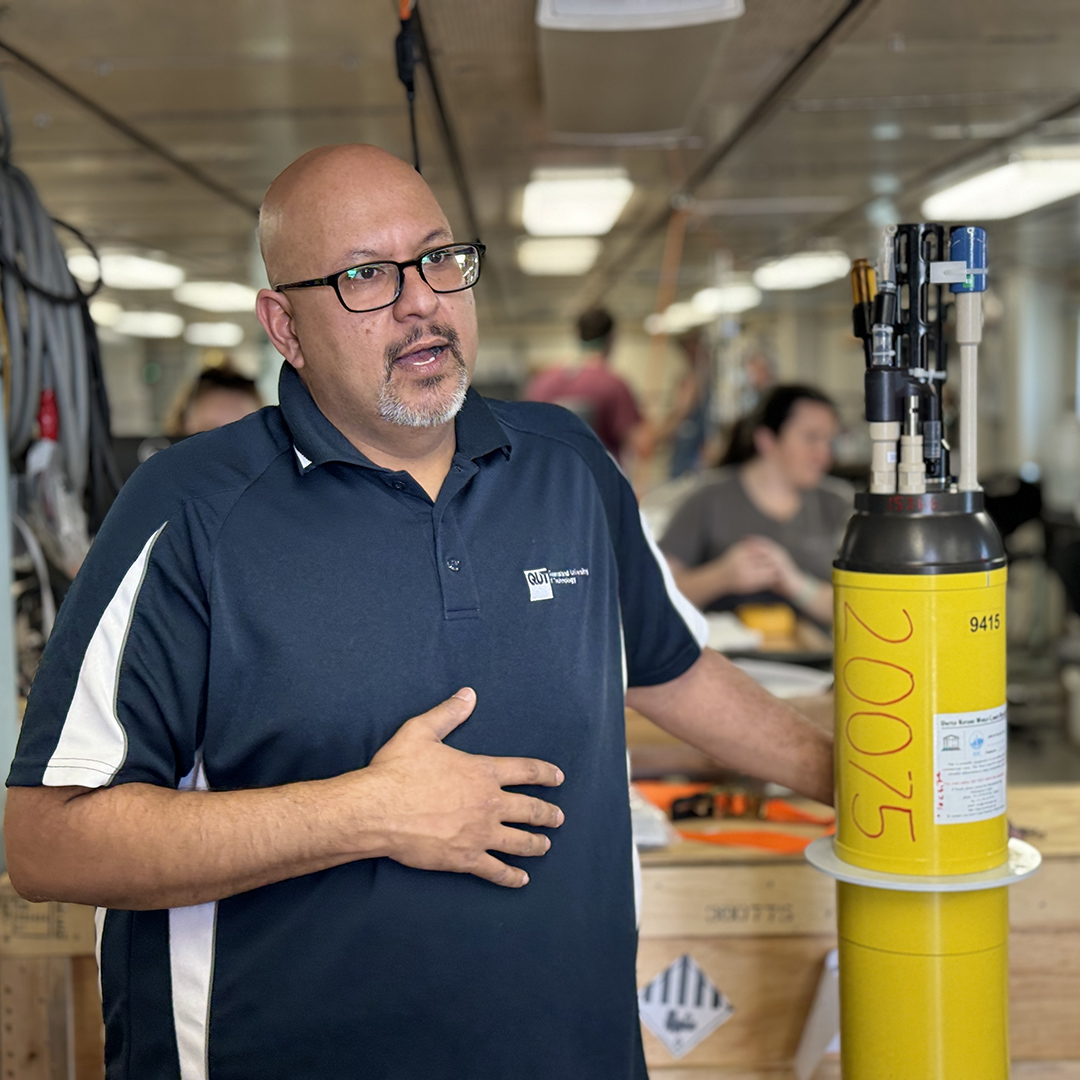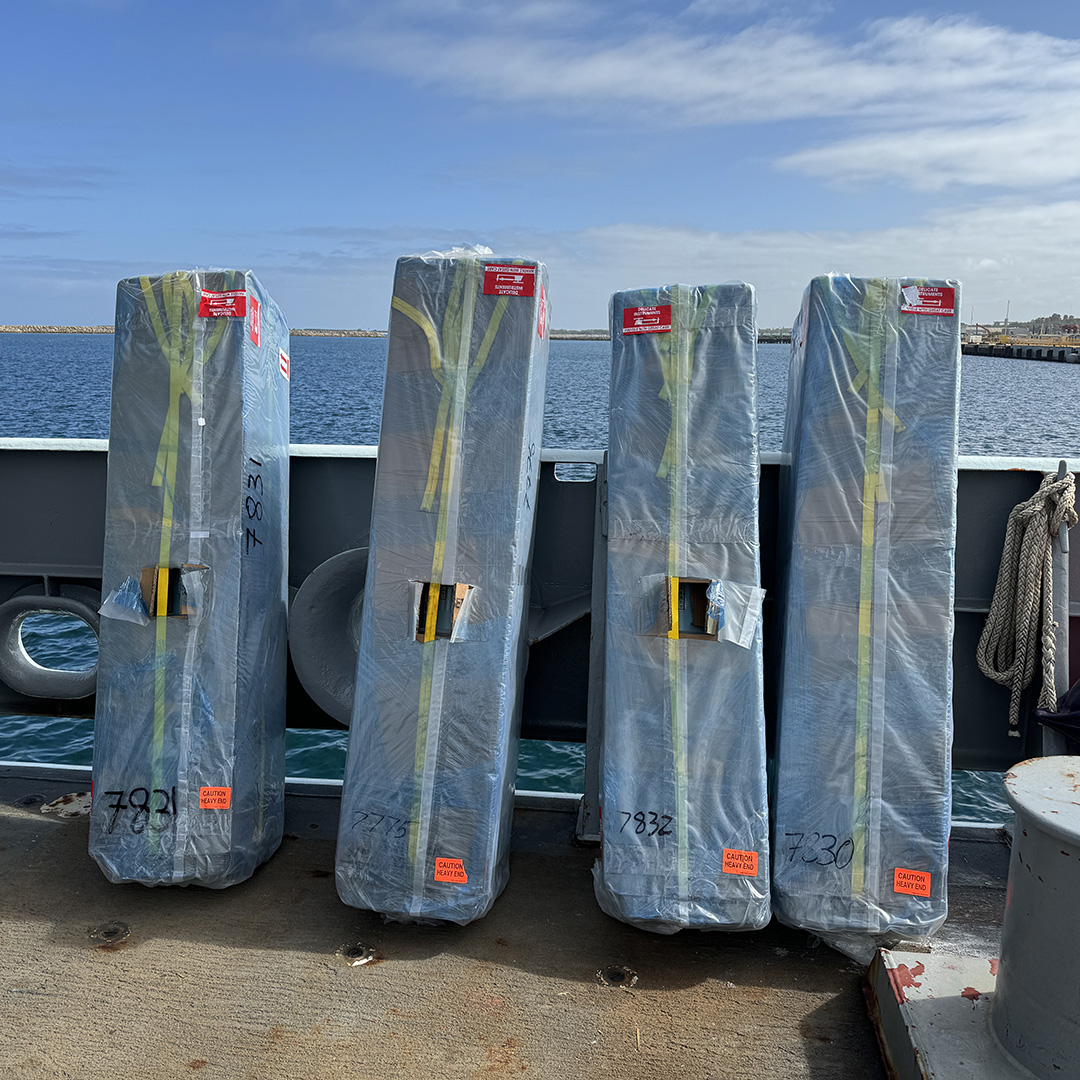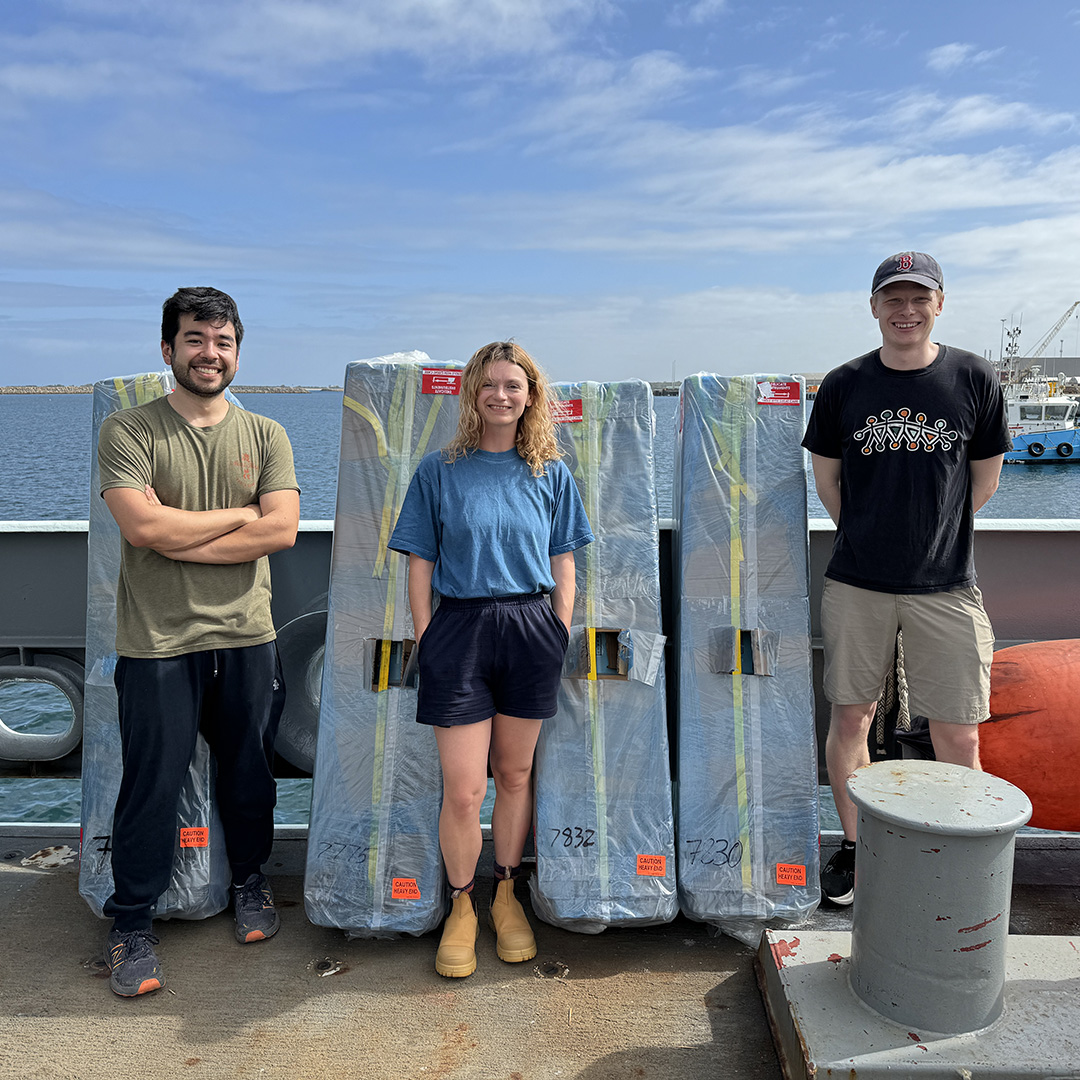Checking out the floats
Making sure it’s “All Systems Go” before we head out
20 February 2024
Before the floats can be deployed, the engineers need to ensure that all systems are operating properly, since they will have no access to them for the 5- to 7-year life of the floats. The BGC floats are sent to the ship in wooden crates and a float engineer from the University of Washington BGC Float Lab travels to the ship to run a series of diagnostic tests on each float to make sure that all of the sensors are working. Our engineer for this deployment was Rick Rupan, who travelled all the way from Seattle, Washington to check out the floats. Rick has a self-contained set-up that helps him communicate with the sensors on each float using a SAIL (Serial-ASCII Instrumentation Loop), which translates the information from the binary language used on the float into a format that is easily readable by the engineers. We are happy to learn that all seven of our BGC floats passed their diagnostic checks and are ready for deployment! After the float checks were complete, Rick gave a short “Float 101” talk with information about the floats, their sensors, how they collect data, and the programs that deploy them. You can learn about the float sensors in this 90-second snapshot.

Rick Rupan checks each float before deployment.

Rick explains the floats to some of the science crew who will be onboard.
In addition to the seven BGC floats we have onboard, we are also going to be deploying seven core Argo floats for Woods Hole Oceanographic Institute (WHOI). These floats were shipped separately and were delayed for a bit, but they finally arrived yesterday…big sigh of relief there! These floats also need to be activated and the systems checked before deployment, but this is done remotely. These floats are stored and deployed in cardboard boxes, so a small window is cut open to allow access to a magnetic reset switch that will initialize the floats. Once activated, the float will start a self-diagnostic Built In Test (BIT), which includes obtaining a GPS position and offloading test messages to verify communications with the Iridium system, as well as inflating the external bladder. Now that all of our floats have passed their inspections, all we need to do is lash them down in preparation for our transit south.

Four of the WHOI Core Argo floats during the activation process.

Caption: L-R: Tatsu Monkman, Ruth Moorman, and Jacob Knight, three of the CTD Watchstanders, helped activate the Argo floats.
Questions?
I’d love to answer any questions that you or your students have! Please feel free to send them to me at jenn@deepbluescience.com or find me on Instagram at @deepbluescience. As long as the wi-fi holds out, I’ll do my best to answer them.
All images are by Jennifer Magnusson unless otherwise noted.
- Expedition Logs
- 2024 GO-SHIP I08S
- I08S Intro
- Float Checks
- Alphabet Soup
- Trieste
- Weekly Update #1
- Nurse Jennie
- Raphael
- Jess – Salts
- Fishstick!
- Cora – pH
- Swampii
- Southern Ocean
- Seawolves Explore
- Ferruccio
- Abby – pH
- Belmont Bullkelp
- Onboard Sampling
- Vincent – Dissolved Oxygen
- Elisa – Dissolved Oxygen
- Marshal – Alkalinity
- Ruth – CTD
- Vic – DOM
